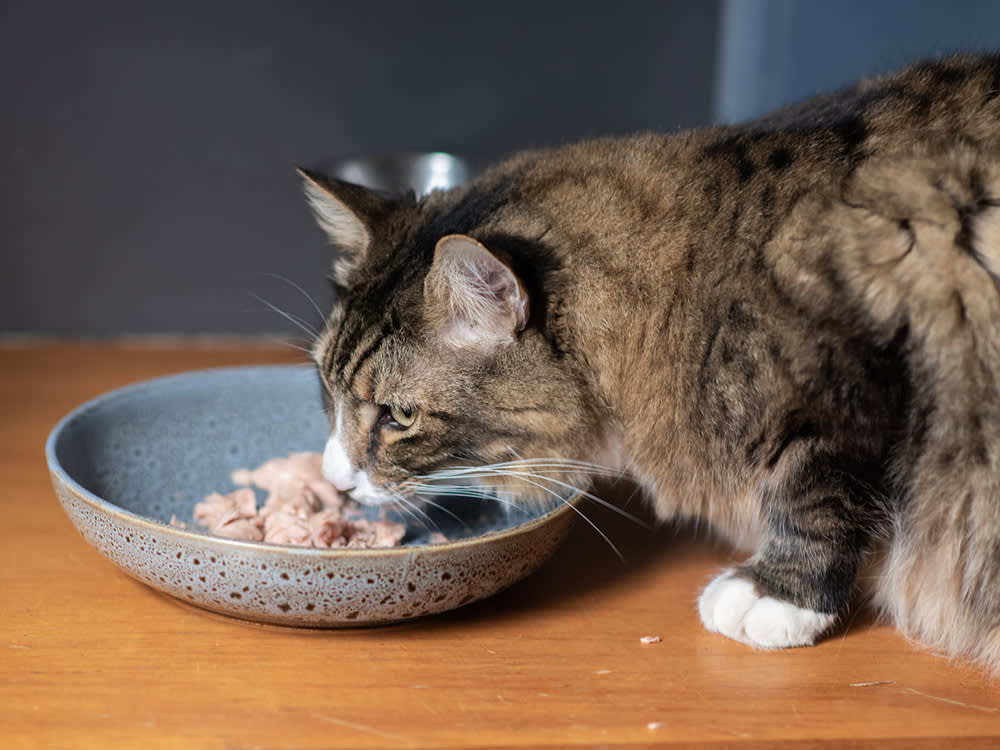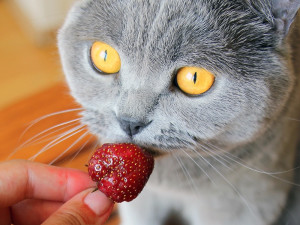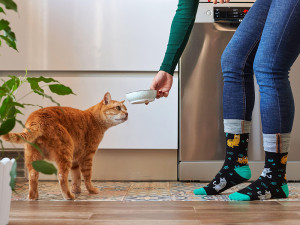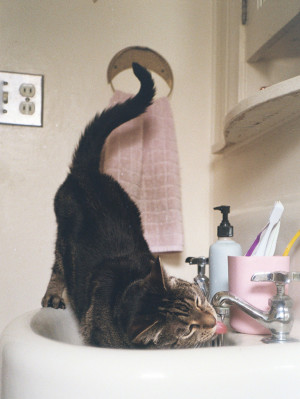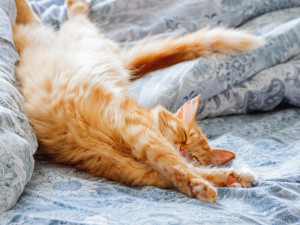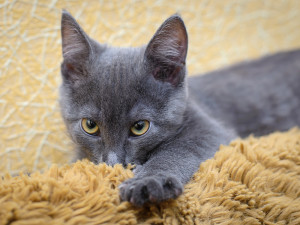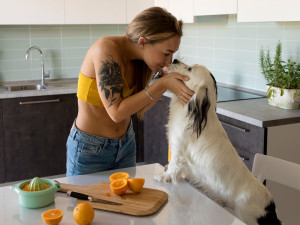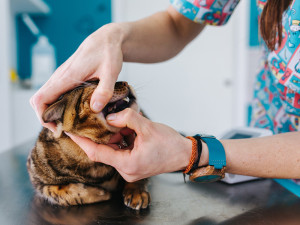Do Cats Need High-Calorie Cat Food?
Why you should only be packing on the calories in certain situations
If you’re looking at foods to feed your cat, and you’re getting the spins just from sheer confusion, don’t worry. There are so many specialised diets out there for cats aiming to address different health concerns, taste preferences and nutritional needs. High-calorie cat foods are one of these broad categories, and it’s important to know when and how to use them properly. Unlike us, cats don’t normally treat themselves to the occasional high-calorie meal as much as they might want to. And while we might argue that we do need that second bowl of ice cream or a fancy coffee drink with the sprinkles, it’s important to be aware of the downsides of feeding cats high-calorie diets or treats when it isn’t appropriate for their health.
So, how do you know if you’re looking at a high-calorie cat food in the first place? Most of them are clearly labelled as such, and in many cases, these diets are only available with a prescription from your vet. The reason is that it’s not common for a cat to need a high-calorie diet, and it would be even more unusual for it to be a good long-term choice. These diets are usually used by vets to ensure a cat is getting enough calories when they might not be able to eat enough otherwise.
There are some over-the-counter diets that can also be considered high-calorie, so it’s best to check out the label of any food you are buying. Always look for information about what life stage the food is labelled for. Some foods will say they are labelled for all life stages, while others may specify that they are appropriate only for adult cats. Once you know what to look for, you can consider if and when a high-calorie diet is appropriate for your cat.
When would you need to feed a high-calorie food?
For nursing cats and kittens
High-calorie foods are often used short-term for specific situations. The most common reason a vet would recommend a high-calorie diet would be for growing kittens, or cats who are pregnant or nursing. In these cases, however, packing on the calories is just one approach, and it’s important to provide a food designed to meet all of their nutritional needs at these life stages. Cats who are pregnant and/or nursing need at least twice as many calories per dayopens in new tab compared to other adult cats. The goal of these diets is to ensure that pregnant and nursing cats take in enough calories without getting too full. If they tried to get the same number of calories from a lower-calorie diet, they would have to eat much more of it, and they’d simply get full before they ate enough calories.
For growing kittens, a similar dynamic occurs; tiny kittens’ stomachs only hold small amounts of food at a time. We want them to get the most out of those small meals by making sure they’re calorie-and-nutrient dense. At the same time, we need to make sure these diets are balanced and appropriate as a long-term choice, not just high in calories. The best options to meet all of these needs are the foods labelled specifically for these life stages.
For cats who have a feeding tube
Another common reason for a cat to need a high-calorie diet would be if they have a feeding tube. A feeding tubeopens in new tab is a temporary measure that allows you or your vet to get nutrients into your cat while bypassing their mouth and their need to eat on their own. This is most often done with an oesophagostomy tube, which is placed in the neck to allow easy syringe feedings. These tubes may be placed in cats who aren’t eating for prolonged periods of time, such as those with certain injuries or illnesses. The tube allows them to get enough nutrients while they’re recovering.
A common condition when a cat will have a feeding tube is called fatty-liver disease, or hepatic lipidosis. These cats usually don’t want to eat, but it is critical to their recovery, so they may need the tube for a few weeks to months. High-calorie diets are very important for tube feedings because they allow cats to get enough calories with a smaller volume of food. Because the food has to be liquefied to fit through the tube, it needs to be high in calories in order to provide enough energy without overly distending the stomach. In these cases, a vet will provide very specific instructions, including a prescription high-calorie diet and precise quantities for the feedings based on calculations of your cat’s weight and nutritional needs.
What to know about high-calorie supplements
Cat parents should be wary of high-calorie supplements in the form of pastes and gels sold at pet shops or other over-the-counter suppliers. These products are usually high in sugar and don’t provide useful nutrients. Most often, they are marketed to pet parents with young puppies and kittens as a means to avoid low blood sugar. While low blood sugar, or hypoglycaemia, can occur in young kittens, it typically doesn’t occur in healthy kittens.
Giving a healthy kitten this supplement is completely unnecessary. For those kittens who do truly have low blood sugar, there is almost always an underlying medical reason that needs to be treated in order for them to get better. These supplements will not treat the problem. A healthy kitten needs a balanced diet, and if they’re getting a large portion of their daily intake from a supplement like this, they won’t eat enough of the other foods they really need for healthy growth and development. Speak with your vet if you’re concerned about your cat’s health, and only use a supplement like this under your vet’s supervision.
Reasons to avoid high-calorie diets
Healthy adult cats don’t need high-calorie diets, even if you think your cat is the next UK Olympics star, who runs laps around the house at high speeds, swings from the shower curtain and leaps across bookshelves. Cats normally eat small frequent meals when they have to rely on catching prey, and a routine of feeding them a few small meals throughout the day is the healthiest schedule for them. If you’re concerned that your cat is too thin, seems to be losing weight or is hungry all the time, it’s very important to see a vet. There’s always a reason for this and medical treatment will get your cat back on track. A high-calorie diet cannot fix those underlying problems.
The downsides of high-calorie diets
For starters, these diets are often higher in fat than other diets, which can cause diarrhoea in some cats. They are also more likely to lead to rapid weight gain, which is great when that is their intended use, but could quickly add up on a healthy cat. Obesity is a big concern for indoor cats because they generally tend to be less active and eat more than cats who have to hunt for their food. Once a cat puts on weight, it is difficult to shed those pounds. Excess weight can lead to health problems including diabetes, joint pain and reduced mobility. For these reasons, a high-calorie diet should only be used with the guidance of a vet. Luckily, there are so many great diets available for cats that a suitable option exists for the kitty who’s as picky as your anti-broccoli toddler.
